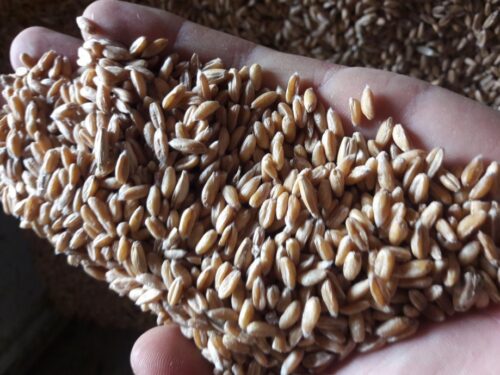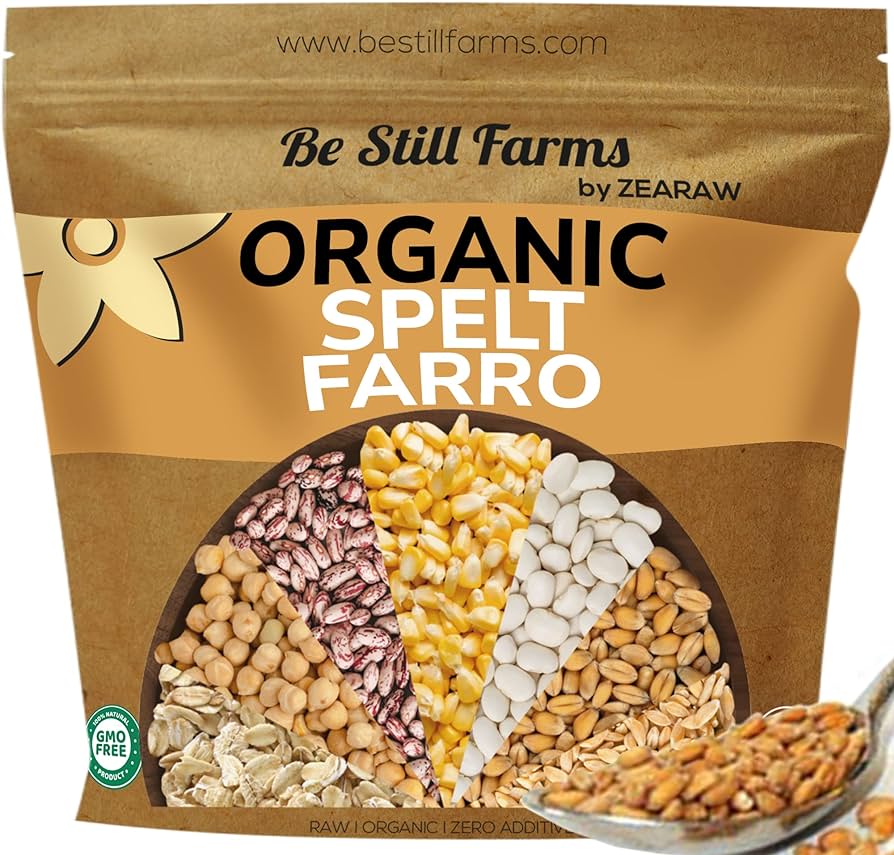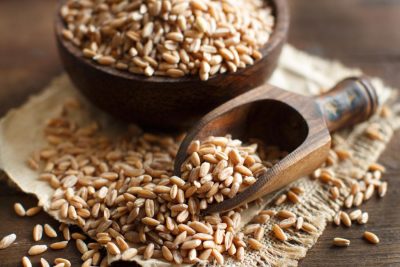Lately there has been a lot of talk about spelt and spelt products. We pay a lot of attention to the selection of food and educate ourselves, which is commendable. The knowledge that through prevention through food selection and preparation, we can solve many health problems or at least reduce them, has crept into our society, regardless of our financial situation.
Buckwheat is an ancient grain, discovered in Asia 5000 years before Christ, which has withstood the test of time and remained unchanged in its composition, unlike other grains that today can be manipulated through GMOs, so its properties change.
Pyrus is more like a weed, where the three-layer sheath protects it from various attacks as an armor. Likewise, this armor protects the seed from moisture, low but dry and high temperatures. Because of this, throughout history, spelt has been an extremely grateful food. Neither then nor now, pesticides are not needed to preserve the seeds, which is why spelt belongs to the superfood because of the purity of its composition and more.
Unlike other grains, spelt has an extremely low amount of gluten and slowly raises insulin due to its low glycemic index. Extremely fine, slightly crunchy, suitable as a substitute for rice, dough and other complex carbohydrates that we have in the meal.
I have to admit that I am hooked on pir in all possible combinations. I almost don’t eat other cereals anymore. As it also affects digestion due to its high fiber content, it also soothes the stomach due to its composition, absorbing stomach acid and releasing nutrients to the stomach lining.
I often fast and I’m fasting, and then the stomach acid is often bubbling around on an empty stomach, frying the stomach walls. After fasting or fasting is over, a meal with spelled is the first choice to calm the stomach.


He called me immediately on the second day after the fast, happy because the heartburn had subsided. Over the course of a month, it completely disappeared, and now he no longer enters the fast with the same heaviness as before, but with joy.
For me, pir is also an ancient Christian food. I would even say Biblical, although it is not mentioned in the Holy Scriptures. However, many other books mention spelt as an important food that lasted in the granaries during the wet or dry periods of the Israelite nation unlike others. It could also be eaten dry and raw. In fact, she sucked in her mouth until it softened, and then she bit down and swallowed. Often, pir in small cloth bags was attached to horse or camel saddles within reach and eaten while riding.
As I write about pyr, I feel and visualize its power. For me, he also has a spiritual dimension. I like to know some source for something. Where something comes from, what has become of it over time and what story it tells. As a Christian, I feel peace when I speak, write, eat and think about the feast. I feel it as a blessed food and I like it all the more. I imagine Moses, Elijah, Jesus who were happy to nibble on it, so why shouldn’t I.
Saint Hildegard describes something similar in her cookbook Saint Hildegard and Food as Medicine.
The book can be purchased through the Verbum bookstore.
On Laudato TV, there is a show called Saint Hildegard’s Kitchen , which I like to watch.
Hildegard highly praises millet and puts it in the first place along with some other foods. The book is a real refresher because the recipes are actually very old, again I would say Biblical, and so logical and most of them simple. It is interesting about Hildegard that she learned about spelled and other foods through vision. So it was given to her, she was gifted.
Today’s Christians pay very little attention to their diet. Let’s stick to that, thank you for putting it on the table. Be modest and don’t overdo it.
I agree there until the very end where the realization that we don’t care about the source of the food and its value stings me. Here the Christian is as careless as, say, about recreation.
Things have changed a lot in today’s time. Everything is impoverished, so the chicken from a thousand years ago and today’s chicken have nothing to do with each other, nor wheat or anything else. But that’s why there remained pir in an unchanged form and some other foods that Hildegard fantastically describes, and thus we can read in the spirit that these foods are also blessed through her description.
I always wonder, why do I have to reach for Japanese seaweed on the other side of the world, which culturally and geographically has absolutely nothing to do with me, if I want to be healthy?
I’m not devaluing that food, I’m just tying it harder to myself.
In addition, such foods are much more expensive because they have to be delivered to our area, and in the yard by the edge of the fence I have fantastic dandelions, nettles or something else that grows without any of my intervention and calls me as ready-made food to pick and store. In combination or alone, they have similar properties, some even better than the famous Japanese seaweed.
Someone recently asked me why I became a Christian without first looking into another religion. Because, since I’m more free-spirited, it turns out that Christianity doesn’t really suit me?
Not to get too philosophical, I said: “Because the church is across the street from me, it’s been standing there for centuries, and what else can I ask for!”
I alluded there to my laziness, commotion and through life the line of least resistance, but at the same time the gift that I can literally find a solution for my spiritual growth across the road. It’s the same with groceries.
We have so much in our yard that it is almost unnecessary to go far.

In the olden days, spelt crept in as a food that we can grow in our own backyard, but the pro-milk industry pushed it out because spelt is not financially profitable. It is more difficult to make money since there is not so much manipulation of the seed, the crop is smaller, fuller and healthier than other grains, and what food and pharmaceutical industry needs a healthy person. We are much more valuable when we are sick because we are consumers.
You can find spelt in health food stores, but also in DM, Muller, and finally in Spar, Konzum, Plodine. We often don’t know it’s pir because it says “Dinkel”.
It is a German name, and given that we import more than half of our products, although we can, for example, produce sorghum ourselves. Do we know that at the Faculty of Agriculture in Osijek, because several researches and final theses were done by students where they discovered, I quote:
Hexaploid wheat, spelt (Triticum spelta L.), occupies an important place in the group of alternative cereals, because due to its biological properties it is becoming more and more interesting for cultivation. The cultivation area coincides with the wheat cultivation area. In the Republic of Croatia, there are excellent conditions for ecological production of spelt. It gives lower average yields than modern wheat, but it is more resistant than them to worse agro-ecological conditions of climate and soil, as well as to diseases, pests and weeds.
And so, we wonder where it got stuck in growing super food in our own garden? Where it isn’t. Politicians’ awareness of this issue is low, followed by interests and the end of the story! They remain as always, individuals focused on passion and happiness. Among them are rare spelt growers in Croatia, such as OPG Jazbec from Slavonia.
But to return to “Dinkel” in DM and Muller. It is interesting that with them, it is industrial and of slightly lower value than the one that is bought in health food stores, and is more expensive.
Dinkel is packaged as raw for cooking (boil for about 40 minutes in salted water), but there are spelled flakes and many other products, including milk, which is the cheapest (9-11 kn a liter), in contrast to, for example, rice, coconut, almond ( HRK 18-25 per liter). There are various combinations of how to arrange a meal in a day, without having eaten pir.
I cook it every other day (5 soup spoons per day max) and it is always on the plate for lunch and/or dinner with protein (I rarely eat fish, chickpeas, meat) and steamed vegetables or a fresh salad.
For breakfast, there are several types of spelt flakes (carbohydrate), which I mix with flax, sunflower, hemp and chia (all plant proteins) seeds and add a teaspoon of pure eco 100% cocoa and honey.
Everyone determines the amount for themselves in order to make it a filling and complete meal.
I found myself in three soup spoons of spelled flakes, three soup spoons of flax seeds, one of sunflower or pumpkin seeds and two of hemp seeds and one of chia.
Often, instead of breakfast, I make a two-liter smoothie in which I put 9dcl of water, the same amount of spelled, flax, sunflower or pumpkin, hemp and chia. To that I add two kiwis or a large apple (two smaller), a few leaves of spinach or chard or some other leafy vegetable, one carrot, three stalks of parsley, one to two celery leaves, fresh ginger (the size of a thumb), a very small clove of garlic ( so that it is not felt in the taste but that it is inside), a teaspoon of turmeric, a teaspoon of honey, a teaspoon of 100% organic cocoa (no sugar added) and mix. I pour into two liter plastic containers (which do not contain BPA and BPS ) and sip during the day as I feel like it.
I’m often fasting (16 hours without a meal), I skip breakfast and only have lunch between 1 and 2 pm, so I drink part of the smoothie before lunch.
This smoothie of mine is to say the least…disgusting and getting used to this taste is not easy. It’s already a habit for me and I don’t suffer from certain tastes. Most of the bitter, spicy and earthy flavors of food are linked to health, because the biggest poison is missing – sugar, which gives everything a nice taste, just like animal fat.
It would be desirable to include buckwheat in your weekly menu, and it is clear why. Sometimes such a small shift, hardly noticeable in our choice of food, can affect a whole range of benefits for our organism.






